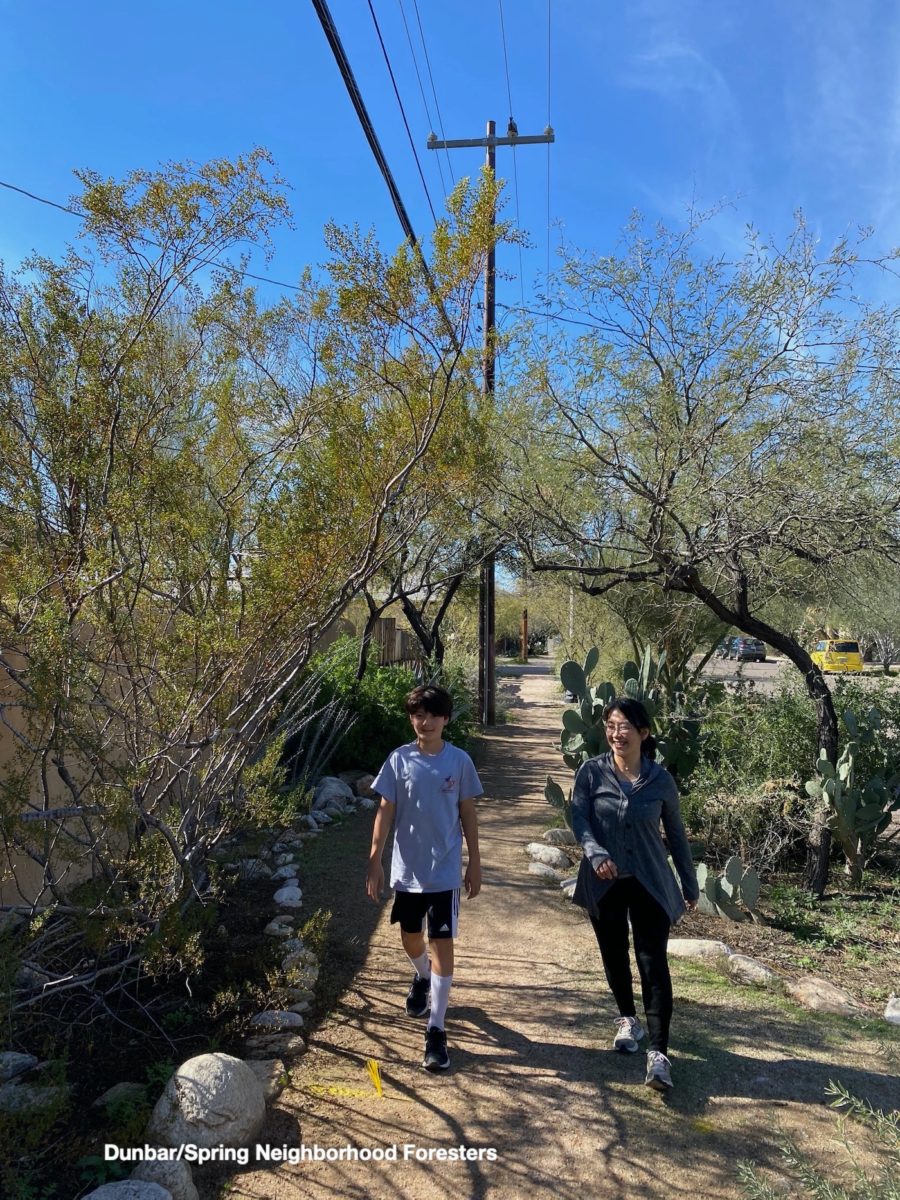I love how the desert smells when the rain drops on the creosote bush. You can replicate this effect by putting a sprig of creosote in your outdoor shower—or better yet growing a live creosote bush beside the shower to help screen it.
And you can get that scent on daily walks when we plant the creosote along public walkways. Though I like to be even more strategic in that I like to plant a creosote bush and grow shade for the path, where I cannot plant a taller tree—such as below an overhead utility line (see figure 1).

Photo: Brad Lancaster
Like a tree, the creosote will need be pruned regularly to maintain open access to the path, but it will not grow so high that it will interfere with the overhead utility lines.
And there are more benefits. Prunings from the creosote make for fragrant bouquets (see figure 2).

For still more benefits and characteristics of the creosote see the info I compiled years ago for a list of multi-use plants native to the Tucson Basin…
LARREA TRIDENTATA (L. GLUTINOSA, L. DIVARICATA) – English: creosote
Spanish: hediondilla
(Zygophyllaceae – Caltrop Family):
Blooms (yellow) periodically, especially March – April and November – December. Found below 4,500′ elevation. Small, waxy leaves are olive to yellowish green and fragrant when wet or crushed. Can grow to 11′. Extremely long lived. Found on dry plains and mesas. Full sun. Cold hardy to 5˚F (Mielke, 1993). Salt tolerance is high.
Wildlife – seeds attract black-throated and white-crowned sparrows, pocket mice, kangaroo rats, and other small mammals; chimpmunks and desert iguanas climb the plant to eat its flowers; jackrabbits are attracted to the plant; flowers attract hummingbirds, 100 different species of native bees; 22 native bees, a small grasshopper, and a walking stick are totally dependant on the plant for their food source.
Edible – flower buds reportedly pickled in vinegar and used like capers (Facciola, 1998). See “Eat Mesquite and More” by Desert Harvesters for recipe.
Medicinal (Moore, 1989), (Curtin, 1997), (Kay, 1996 ), (Moore, 1990), (Bigfoot), (Felger and Moser, 1985), (Rea, 1997), (Nabhan, 1985), (Bean and Saubel, 1972).
Other uses – prevents rancidity of vegetable oils not meant for digesting (Moore, 1989 ); resin/lac secreted from a scale insect (Tachardiella larreae) that penetrates twigs can be used as a glue and/or sealant (Felger and Moser, 1985), (Curtin, 1997), (Rea, 1997); lac ground when dry and then heated over fire to make glue to seal ceramic ollas containing saguaro syrup (personal communication with Cipriano 7/1/2000), wood used for harpoon points – doesn’t soften in water (Felger and Moser, 1985); temporary sandles made from leafy branches when tied to bottom of feet (Felger and Moser, 1985); round insect galls (created by gall midge, Asphondylia) found on twigs were smoked like tobacco (Felger and Moser, 1985); melted lac used to decorate arrows (Felger and Moser, 1985); powdered leaves used as deodorant (Rea, 1997) – works on stinkfoot; makes the desert smell like rain when wet; used in roundhouse construction (Felger, et al 1992); creosote tea can be used as an insect repellant in the garden (Bigfoot).
Guild associates – jojoba, ratany, paperflower, yerba de venado, zinnia acerosa, christmas cholla, saguaro, queen of the night blooming cereus,. Evergreen.
Low-water-use (1).

